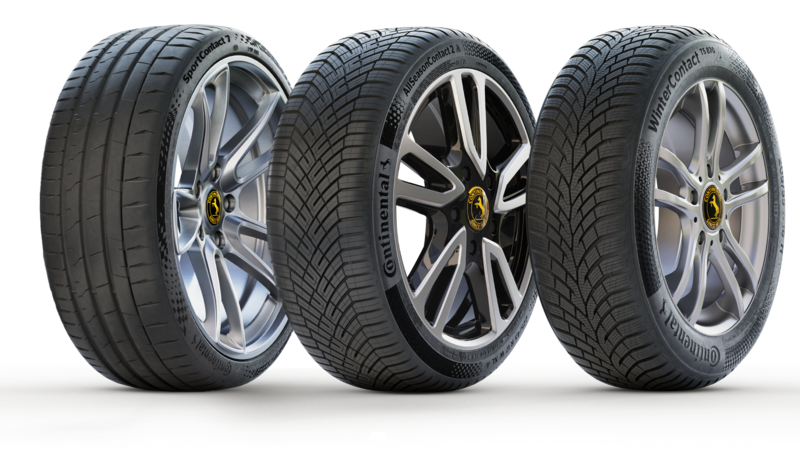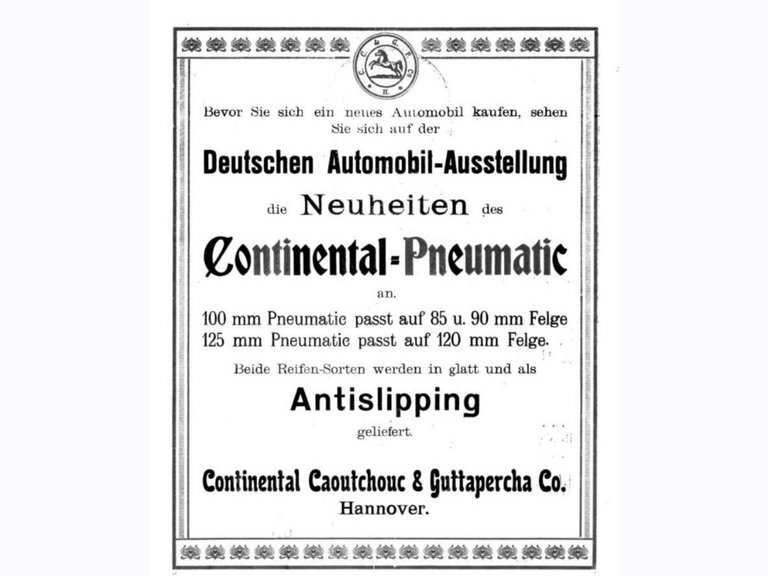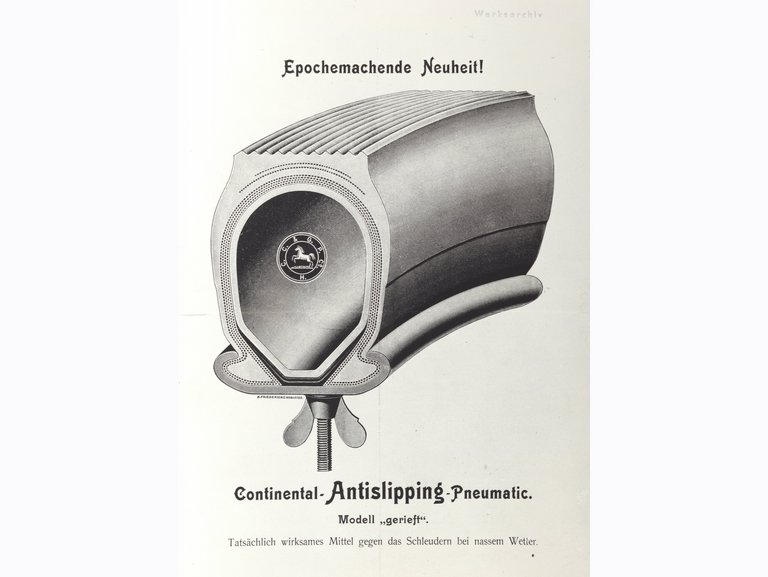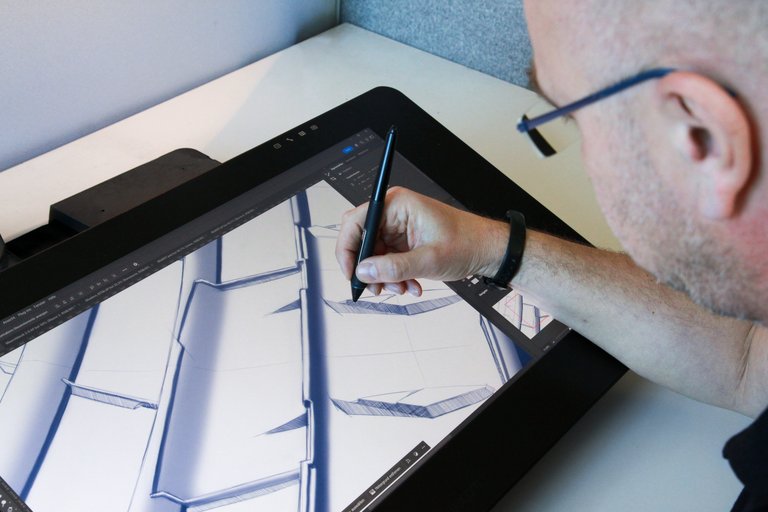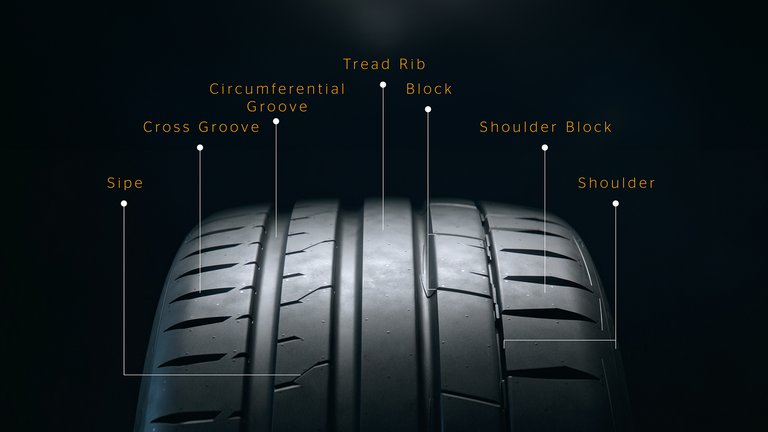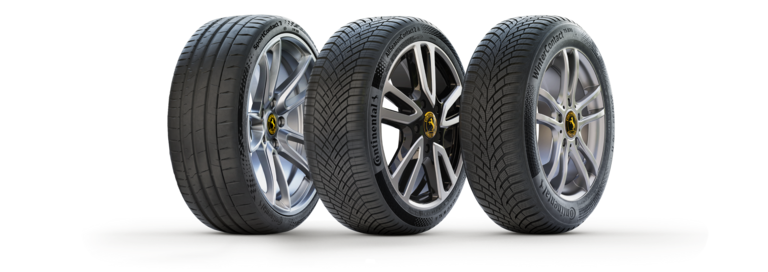Continental Celebrates 120th Anniversary of First Tire Featuring a Tread Pattern
- World’s first tire with a tread pattern featured simple hand-carved structure of circumferential grooves; today, digital design and virtual testing is applied in pattern development
- Energy efficiency, braking performance and wear behavior of tires depend largely on the tread pattern
- “With the first hand-carved tires having a tread pattern 120 years ago, Continental revolutionized mobility worldwide. Since tires were no longer smooth and unstructured in their contact area to the road, they were able to offer significantly more traction, grip and driving safety,” says Felix Hübner, Head of the department Pattern, Contour & Industrial Design at Continental Tires
Hanover, Germany, May 15, 2025. With the development of the world’s first car tire with a tread pattern and its market launch 120 years ago, Continental achieved a milestone in the history of mobility. At the time, personal mobility was still in its infancy. However, as the number of vehicles, their weight and the power of the engines increased, the demands placed on handling characteristics and safety steadily grew. Continental responded by introducing the first tire ever having a tread pattern, significantly improving traction and shortening braking distances on wet and dirty roads. Continental’s tire developers have been perfecting this principle for over a century, leading to numerous other innovations in tire design: from the first longitudinal to the V-shaped directional tread patterns of today and the most advanced AI-supported design developments of the future. As a result, the safety, efficiency and comfort of vehicles have been steadily improved. Tire lines from Continental such as the PremiumContact, EcoContact and WinterContact as well as the high-performance SportContact 7 model are just a few examples of this.
“The tread pattern of a tire is not only an important distinguishing feature, but also has a major influence on the overall vehicle performance. With the first hand-carved tires having a tread pattern 120 years ago, Continental revolutionized mobility worldwide. Since tires were no longer smooth and unstructured in their contact area to the road, they were able to offer significantly more traction, grip and driving safety on wet, dirty and snow-covered surfaces. This is due to their sophisticated block, groove and sipe pattern structure,” explains Felix Hübner, Head of the department Pattern, Contour & Industrial Design at Continental Tires. “Today, new designs are digitally created, virtually tested and refined in further development. This allows us to continually improve the safety and efficiency of our tires day by day, building on a success story that has lasted for more than a century.”
Tread pattern determines the safety of a tire
Being the interface between the vehicle and the road, the tread pattern of a tire is crucial for driving safety. The contact area of a car tire is around the size of a postcard and transfers all the forces that occur when braking, accelerating and steering. On wet or snow-covered roads, the tread pattern absorbs water, slush or snow and effectively channels it away, improving the contact between the rubber and the road and preventing aquaplaning. Traction, noise, brake performance, wear behavior and tire abrasion also depend crucially on the tread design.
Today, tread patterns are developed specifically for different segments and applications. Examples include racing tires and ultra-high-performance tires for high speeds on public roads. There are also summer, all-season, winter, Nordic/ice and off-road tires. Winter tires, for example, with their many blocks, numerous sipes and grooves, are significantly more structured than summer tires, allowing them to better grip snowy surfaces and displace water and slush from the road surface.
Tread patterns suitable for specific applications
Developers distinguish between three basic types of tread patterns:
- The symmetrical tread pattern is universal and can be used in any direction, allowing the tires to be fitted in any position. This is particularly advantageous for heavily used vans, especially in urban traffic with changing road conditions and frequent stops.
- A directional tread pattern has a specific direction of rotation, offering a high degree of protection against aquaplaning and excellent handling on snow and slush. In addition, it provides very good directional stability at high speeds, making it a safe choice for winter road surfaces.
- An asymmetrical tread pattern is characterized by excellent handling, high cornering stability and good grip on wet roads. It therefore offers the ideal combination of properties for wide, sporty summer tires.
Each tread pattern comprises four components:
- Blocks are the protruding rubber parts of the tread pattern and are in direct contact with the road surface. They provide traction and grip, which are crucial for acceleration, braking and cornering.
- Grooves are the spaces between the tread blocks. They serve to channel water away and reduce the risk of aquaplaning.
- Ribs refer to the tread blocks arranged next to each other in a row. They ensure stability and improve the vehicle’s steering precision.
- Sipes are the fine incisions in the tread blocks. They increase the flexibility of the tread blocks and improve grip on wet and slippery surfaces by providing additional gripping edges.
The tire developers combine these elements into a technical structure to achieve the specified tire properties. In a second step, these technical structures are then used by industrial designers to assemble them into a distinctive tread pattern. Continental protects the resulting unique combinations by means of patents. The tire manufacturer currently holds more than 1,700 granted, active patents for tire tread patterns.
Technological evolution: virtual developments and AI-supported performance analysis
While over 120 years ago, the circumferential groove pattern was still carved into the rubber by hand, today Continental designs digital prototypes virtually on a computer using state-of-the-art simulation technology. The initial testing phases are also run as computer simulations. Here, the experts at Continental are increasingly adopting artificial intelligence. Not only do AI systems analyze large volumes of data that can be used to predict and optimize the physical properties of the tire tread patterns, but they also help simulate the behavior of tires under a variety of conditions. New tread patterns are tested and optimized virtually until one stands out due to its performance and is selected for potential serial production. Only then are the first test tires produced and then carefully trialed at tire testing facilities. Thanks to virtual development and testing, hundreds of tires can be saved each year because they no longer need to be physically produced. This helps conserve valuable raw materials.
Future vision: the tire tread pattern of tomorrow
The requirements for tires have been constantly evolving for the past 120 years. Today, sustainability plays a key role: the continuous improvement of mileage, wear rate and rolling resistance, without compromising on safety-relevant properties, are important criteria in Continental’s tire development. The company’s developers also adapt tread designs to new challenges such as changes in climate and legal requirements. Optimized tread and special sipe geometries for improved fuel efficiency and even more driving safety will play a key role in this context. Continental aims to continue leveraging its 120 years of tire design expertise to balance safety, efficiency and sustainability in the future.

Katharina Bühmann
Technology, Innovation & Original Equipment
Manager Global Communications
Continental Tires

Henry Schniewind
Head of Global External Communications
Continental Tires
